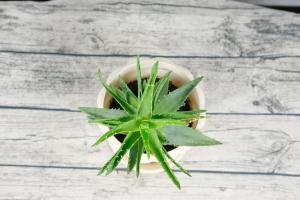Introduction
Minnesota is a state that is home to a variety of plant species, including the spruce tree. But have you ever wondered why spruce trees are well-suited for growing in Minnesota? In this article, we will explore the ecology of Minnesota and the adaptations that make spruce trees thrive in this northern state.
Minnesota's Climate
Minnesota has a cold and humid climate, with long and harsh winters and short, cool summers. This climate is due to the state's location in the northern part of the United States and its proximity to the Canadian border. The average temperature in Minnesota is around 45 degrees Fahrenheit, with temperatures dropping below freezing during the winter months. The spruce tree is well-adapted to survive in this cold and humid environment.
Spruce Tree Adaptations
Spruce trees have several adaptations that make them well-suited for growing in Minnesota's climate. Firstly, spruce trees have a conical shape which helps them retain heat in the winter and shed snow more easily. This also allows the tree to absorb sunlight more efficiently during short days in the winter. Secondly, spruce trees have needles instead of leaves, which helps them conserve water and prevents them from losing moisture during dry winter months. Lastly, the needles of spruce trees contain a waxy coating that protects them from the harsh winter winds and low humidity.
Spruce Trees in Minnesota's Ecosystem
Spruce trees are an important component of Minnesota's ecosystem, playing a critical role in providing habitats for various species of birds and mammals. They are also important in preventing soil erosion and maintaining water quality in Minnesota's lakes and rivers. The cones of spruce trees are an important food source for a variety of wildlife species during the winter months. Additionally, Minnesota's logging industry has traditionally relied on spruce trees for lumber and paper production.
Conservation Efforts for Spruce Trees in Minnesota
Spruce trees are considered a valuable resource in Minnesota, and the state has taken steps to protect them from disease and over-harvesting. Conservation efforts have included planting new spruce forests and monitoring the health of existing spruce trees. The state has also implemented regulations regarding the harvest and sale of spruce trees to ensure that they are not depleted beyond sustainable levels.
Conclusion
The spruce tree is an iconic species of plant that is well-suited for growing in Minnesota's cold and humid climate. Their adaptations, along with their importance in the state's ecosystem and economy, contribute to their value as a natural resource. By understanding the ecology and adaptations of spruce trees in Minnesota, we can continue to protect and sustain these important plants for future generations.

 how many times do yo...
how many times do yo... how many planted tre...
how many planted tre... how many pine trees ...
how many pine trees ... how many pecan trees...
how many pecan trees... how many plants comp...
how many plants comp... how many plants can ...
how many plants can ... how many plants and ...
how many plants and ... how many pepper plan...
how many pepper plan...




























